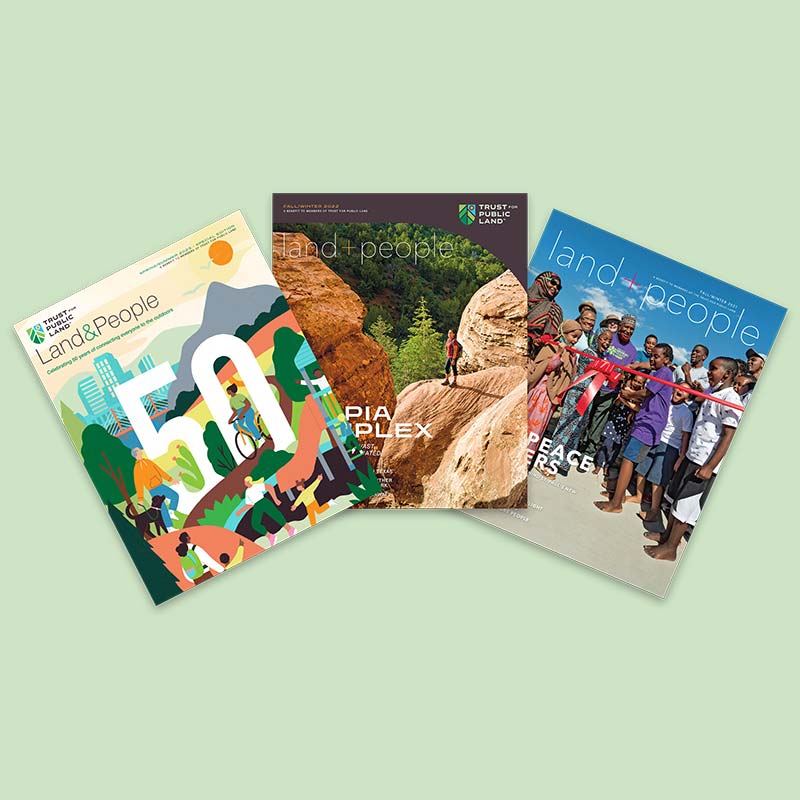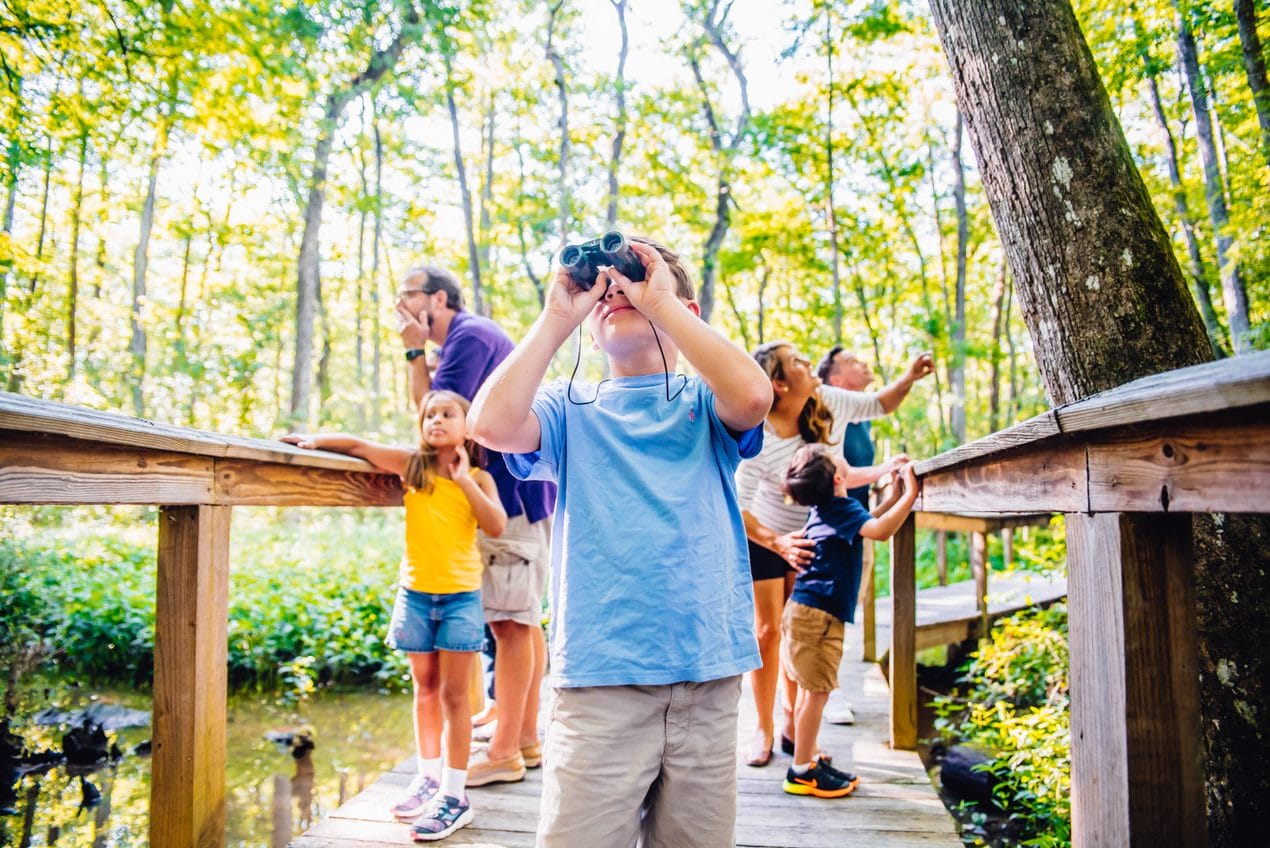When walking through a neighborhood park, as children giggle on a playground or a group of seniors stroll briskly along a gravel walking path, it’s hard to imagine such a simple space can alter the local, regional, and even national economy. But it can.
We know parks improve our physical and mental health. We know they bolster climate resilience and reduce air pollution. And we know they bring communities together. But to what degree? What impact does a new or revitalized park, or a new trail system, or forever-preserved open space have on, say, our staggering healthcare costs? How many dollars can it save us on local stormwater treatment? How many tourists will it attract and how much will they plug into the local economy when they spend on hotels, restaurants, and shopping?
Imagine the power of knowing.
More and more communities want to know, and TPL is helping them by quantifying the costs and the often overlooked benefits of preserving green space.
“Clients most often reach out about conservation economics work when they want to build a quantified, evidence-based case for conservation funding,” says Jennifer Clinton, TPL’s senior parks and conservation economist. “Park and recreation budgets compete with many other municipal needs, and long term environmental benefits can be challenging to articulate. But TPL’s economic benefits and return on investment studies successfully make that case.” When towns and cities have the data to understand the broader societal impact of conservation investments, they can justify past spending and direct future investments.
Want to know how the true economic return of park investments in your community or the potential upside to funding a new green space near you? Reach out to Jennifer Clinton and our Conservation Economics team.
One-third of Americans, including 28 million children, lack safe, easy access to a park within a 10-minute walk of home. Urge your senators to pass the Outdoors for All Act to create parks and enhance outdoor recreational opportunities!
Capturing the Economic Value of Conservation
According to research by the National Recreation and Park Association, in 2019 local public park and recreation agencies in the United States generated nearly $218 billion in economic activity, up from $140 billion in 2013. In 2019 those agencies supported over 1.2 million jobs from their operations and capital spending alone.
Our research has shown that conservation returns between $4 and $11 for every dollar invested. In Vermont, conservation returns $9 to the economy, and in Maine it is as much as $11 (as of 2012).
Parks and green spaces improve water quality, naturally manage stormwater, reduce air pollution, enhance community health, provide recreational opportunities, attract and retain businesses, and support economic development in their region. People who are physically active in parks have reduced healthcare costs. In turn, all of this generates local tax revenue both from increased property values and from tourist spending.
Still, investments in parks and green spaces can be a tall order on a ballot initiative or with budget appropriators unless the fiscal benefits are clear. Our Conservation Economics team leverages the expertise of our Land and People Lab to measure how conserved lands contribute to tourism, property values, ecosystems health, and avoided healthcare costs. Our studies are used to show local governments and voters alike what each dollar can do, unlocking private and public funding necessary to create and maintain parks and open land. That’s why local communities in 27 states have sought our research capabilities and expertise since 2008 to measure the success of their investments and build the case for future funding.
One of those recent cities is Baton Rouge, Louisiana, which sought our help to demonstrate the value of a 20-year park improvement effort.
The Recreation and Park Commission for the Parish of East Baton Rouge, also known as BREC, manages an astounding 175 parks—a total of 6,568 acres of land, over 400 buildings and 56 recreation centers, almost 75 miles of park trails, and over 260 basketball courts. To put the size of the BREC system in perspective, it would take almost 11 days (without sleeping) to play a one hour game at each basketball court. Walking each mile of trail would take 25 hours. And visiting each park for an hour would take over seven days.
When accounting for what people pay in access fees and the time they invest traveling to such spaces, our research found that BREC’s parks provide $280 million in recreational use value every year.
We produced a similar report for New York City, and we found that the park system provides a staggering $9 billion in recreational value each year.
“In the past few months, three communities engaged our team to update economic benefit studies we conducted several years ago,” says Clinton. “They’ve seen the real-world impact of this research in their own communities and returned to us to understand park benefits in a changing landscape defined by demographic, wealth, and real estate shifts, the COVID-19 pandemic, and a long-overdue interest in not just how much but who benefits from conservation investments.”
Conservation and Our Health
As a country, our poor health is no secret. Among OECD countries, the U.S. has the highest death rates for avoidable or treatable conditions and the third-highest rate of suicide. Zip code is the biggest predictor of a person’s health. The rate of people with multiple chronic conditions is the highest across these countries and our obesity rate is nearly twice the average.
In East Baton Rouge Parish, 36 percent of adults are obese and 30 percent report no leisure time physical activity, both higher than national averages. A lack of physical activity and associated rates of obesity have led to tremendous healthcare costs. Parish residents that use BREC parks and trails to meet all 150 minutes of weekly physical activity recommended by the CDC avoid over $8 million in healthcare costs each year, according to our report. This translates to an annual cost savings of $1,360 per year for parish residents 18 to 64 and $2,720 for adults 65 and older.
Bolstering Fiscal Health
The lush and serene forests of Vermont, their world-renowned fall leaves, local food and beer, and epic hiking and skiing attract visitors. Our 2018 research shows that tourists and residents generated $5.5 billion in annual consumer spending related to outdoor recreation across the entire state. In the same year, our research found that tourists and residents of New York state’s rural 1000 Islands region spent a combined $98.9 million at the 48 local sporting goods stores. It’s no surprise that such a destination generates so much for the area’s economy. If you’re lucky enough to visit, you’ll find over 100 miles of stunning coastline and sparkling fresh water to explore.
In New York City, you may think tourists only come for Broadway, Times Square, and an endless list of museums, but tourism spending connected to the park system is almost $18 billion per year.
Economic research shows that home values typically increase near high-quality parks, trails, and green space. Homeowners living within 500 feet of a BREC park experience an overall property value increase of over $20 million, which leads to annual property tax revenue increases over $1.5 million. With increased property values and increased tax revenues come more opportunities for investments in the community.
Knowledge is Power
National, state, and local parks across the country are chronically underfunded and many are on the verge of collapse, suffering from years of deferred maintenance and underinvestment. Nearly two-thirds of city park and recreation departments in the most populous U.S. cities have faced budget cuts in recent years or anticipate one. Righting that ship is hard to imagine.
The growing study of conservation economics is a critical piece of the equation. It makes it possible to take what feels good as we walk along a gravel trail, swim in pristine waters, or relax under a tree in a city park, and quantify the social and economic value of those experiences. With such an understanding, we can make informed decisions about private and public conservation funding.

Donate to become a member, and you’ll receive a subscription to Land&People magazine, our biannual publication featuring exclusive, inspiring stories about our work connecting everyone to the outdoors.

